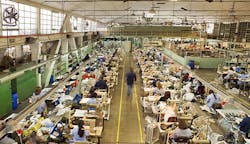The Cost of Cheap Labor and Why It’s a Small Part of the Equation
When given the opportunity to make significant changes to your supply chain, the mantra of “question everything” can’t be overstated—even when the topic becomes cheap labor for consumer product manufacturing.
Should you find yourself in a position to review and potentially make major changes, I would offer the following three points for consideration.
1. The source of the raw ingredient and its impact on cost is crucial.
Many people think that a majority of a finished good product cost is in labor and manufacturing overhead. But for us, and likely others, cost is largely tied to the ability to find local production of the raw materials and components. If you have to import “raws” and components, you are likely going to lose the economic edge that cheaper labor might otherwise provide.
My team puts a tremendous focus on the quality and source of the raw ingredients—it’s our key focus that drives our premium positioning.
Focusing on your raw material sourcing as the most important aspect of your supply chain shifts you away from chasing cheap labor. You are better off centering your manufacturing plant around material supply and proximity to your customer base. For many consumer products, the economics simply don’t work out when your raw materials aren’t locally produced.
2. Understand customer preferences.
Consumer demand for goods produced in certain countries is increasing. The value of the country of origin varies, of course, by the product category. We find that “Made in the USA” carries premium positioning globally for nutrition products. Consumers simply trust the safety of foods produced in the U.S. For other categories, like beauty and skin care, sourcing from markets such as the U.S., Korea, Japan or France carries a premium influence. For home care or durable goods, such as TVs, there is far less emphasis on the country of origin.
You must identify reliable sources for consumer intelligence and leverage those learnings deeply. For example, our network of independent distributors is a pipeline that supplies a wealth of information about consumer preferences from all around the world. These learnings drive decisions and can’t be discounted in today’s marketplace.
3. Labor is just one of the non-material costs that you should be considering in your decisions.
With the expansion of free trade agreements, and the need for more supply chain agility, there are a number of other factors on top of material and labor costs you need to consider in determining your production site. Free trade agreements allow for significant savings when you meet certain local sourcing minimums. Sometimes finding enough local materials to qualify for the duty reductions is the hardest part of achieving these savings.
Also, depending on the variability of the demand, shorter lead times and more supply chain agility (the ability to accommodate surge in demand) can make a big difference in captured sales. For example, when there are large pollution alerts in some of the Asian markets, we can see our air treatment system sales spike. Being able to rapidly respond to this increase in demand is critical to the business.
In the end, simply chasing low labor costs is seldom the best way to think about your supply chain. Consumer preferences, material supply and other considerations such as free trade and demand variability are more important factors to consider.
George Calvert, Ph.D., is the chief supply chain officer and R&D officer for Amway, a $9.5 billion manufacturer of nutrition, beauty and home products sold through a network of independent distributors.
